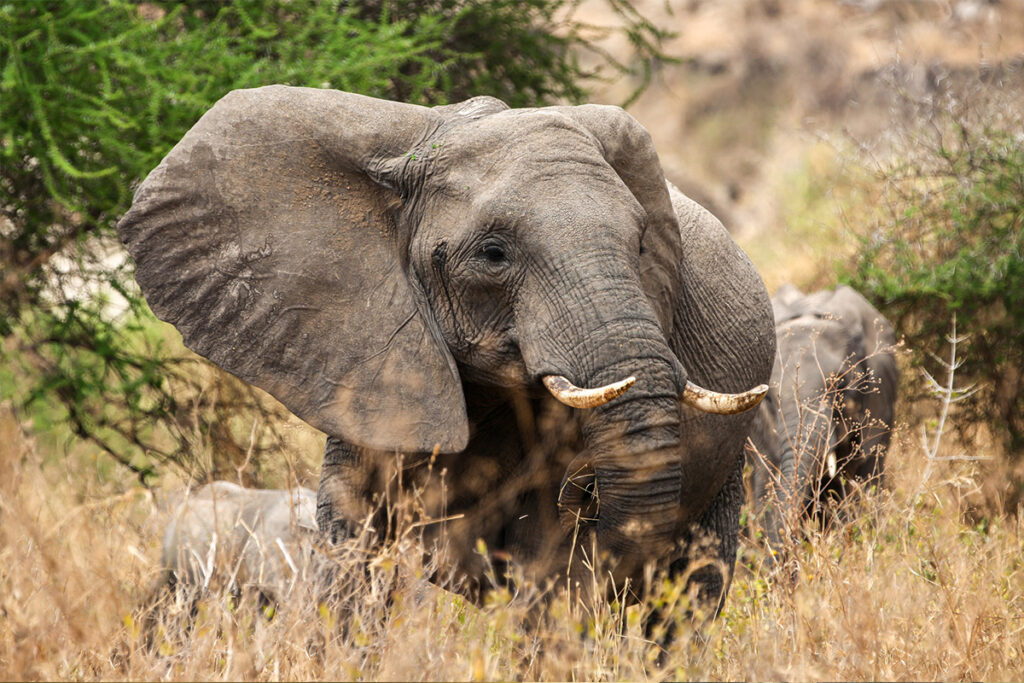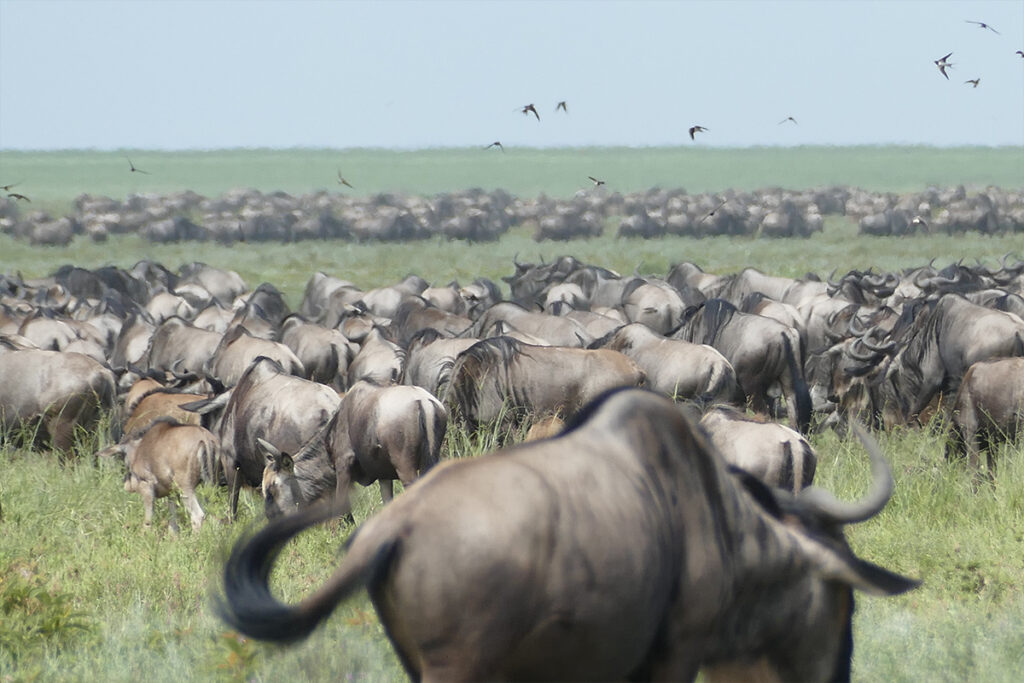Every beat of the drum in the Gogo traditional dances holds echoes of a culture that dates back centuries. These dances are not merely performances; they are dynamic expressions of identity and community. Observers are often spellbound by the intricate footwork and vibrant costumes that tell stories without uttering a single word.
Rooted in the heart of Tanzania, these dances serve as a living archive of the Gogo people’s rich history. With over 5,000 ethnic groups worldwide, it’s intriguing how Gogo dances have distinctively preserved unique cultural narratives. From rituals to communal celebrations, these dances continue to bind communities together, underscoring the enduring vibrancy of Tanzanian heritage.

Gogo Traditional Dances: Celebrating Tanzanian Heritage
In Tanzania, Gogo traditional dances are vibrant expressions of cultural pride and communal storytelling. These dances offer more than entertainment; they provide glimpses into the values and history of the Gogo people. Colorful costumes swirl in time with drumming rhythms, creating a sensory experience that captivates audiences. According to this post, community gatherings often feature these dances to celebrate significant events. The unity and energy shared during performances highlight the strength of Tanzanian traditions.
The styles of Gogo traditional dances vary, each with its unique theme and story. Some represent historical battles, while others celebrate life’s milestones like weddings and harvests. These dances have evolved over time, yet they remain rooted in age-old customs. For example, the Makwaya dance is known for its complex footwork and energetic movements. As people gather to watch, they are reminded of their collective past through this entertaining art form.
Traditionally, music and costumes play key roles in the power of Gogo dances. Drummers set the rhythm, guiding dancers in synchronized moves that convey emotions and stories. Intricate beadwork and colorful fabrics enhance the visual appeal, with each piece holding cultural significance. Here is the article on how these elements help convey deeper meanings in dance. They evoke pride and demonstrate the creativity of the Gogo community.
Today, Gogo dances continue to thrive, adapting to modern influences while preserving their roots. Schools and cultural organizations now teach young Tanzanians the history and techniques behind these beloved dances. As tourism grows, Gogo dances serve as a bridge, introducing global audiences to Tanzania’s rich heritage. Efforts to document and archive these traditions ensure their survival for future generations. As traditional dances meet contemporary life, they showcase the enduring spirit of Tanzanian culture.
Vinubi-Gogo Tribe Tradition Song/Dance
The Cultural Significance of Gogo Traditional Dances
Gogo traditional dances serve as a cornerstone of cultural expression and identity for the Gogo people in Tanzania. They are more than just performances; they are a way to communicate values and lessons through movement. These dances act like a living book, preserving stories and customs that might be forgotten. They also foster a sense of community, gathering people together during important occasions. In a way, these dances keep traditions lively and relevant.
One fascinating aspect is how dances are tailored to fit various celebrations and rituals. For example, some dances are specifically performed during harvest festivals, while others are part of coming-of-age ceremonies. This versatility helps reinforce social norms and values, allowing them to persist across generations. Each dance carries its unique set of meanings and messages. This adaptability keeps the culture alive and thriving.
A unique quality of Gogo dances is their role in social cohesion and unity. By participating or watching these dances, individuals feel a sense of belonging and pride. The shared experience helps break down barriers and builds bonds among community members. This unity is crucial for maintaining strong, cooperative communities. In this way, dances act as social glue.
The dances also act as a cultural ambassador on the international stage. As Tanzania engages with the global community, these dances offer a unique glimpse into its rich heritage. By sharing these dances with the world, the Gogo people ensure wider recognition and appreciation for their culture. This international exposure not only celebrates their heritage but also strengthens their cultural identity. It’s a beautiful way to blend the old with the new, keeping traditions bright and alive.
Exploring the Different Styles of Gogo Dances
Gogo dances, with their lively steps and rhythms, offer a glimpse into the varied cultural tapestry of Tanzania. Each style has its own story to tell, ranging from joyful celebrations to solemn rituals. For example, the Makwaya dance is known for its complex footwork and high energy, often performed during vibrant ceremonies. This dance requires quick, coordinated movements that captivate audiences. It’s a perfect example of dance as a form of storytelling.
Another popular style is the Benulo, which emphasizes community bonding and harmony. Unlike the fast-paced Makwaya, Benulo offers a slower, more rhythmic expression focused on unity. Dancers often join hands, symbolizing togetherness and cooperation. This dance helps foster a sense of community and shared purpose. Through these motions, Gogo people communicate the value of working together.
Elements like costumes and props add distinct flair and meaning to each dance. Beaded jewelry, vibrant fabrics, and traditional accessories not only enhance the visual spectacle but also signify cultural heritage. Props such as spears or shields are commonly used to illustrate themes of bravery and protection. These elements elevate the dance, making every performance unique. They provide layers of meaning that words alone could not capture.
Gogo dances are continuously evolving, embracing various influences while staying true to their roots. New styles are emerging as younger generations add their own twists, blending modern rhythms with traditional moves. This evolution keeps the dances fresh and relevant, appealing to both local audiences and tourists. As they evolve, these dances still hold true to their original essence. They remain vital expressions of the Gogo people’s enduring spirit.
How Gogo Dances Reflect Tanzanian History
Gogo dances serve as a dynamic reflection of Tanzania’s rich history, intertwining stories of the past within their rhythm and movement. The dances often depict tales of bravery, resilience, and the daily life of the Gogo people. They’re like history lessons brought to life on the dance floor. Through these performances, dancers communicate events that shaped the community over centuries. It’s an engaging way to preserve and share their historical legacy.
Each dance encapsulates significant historical moments, offering a cultural narrative that spans generations. For example, the intense Wamayega dance captures the spirit of warriors preparing for battle, echoing Tanzania’s history of defense and protection. Such performances not only entertain but also educate, allowing younger generations to connect with their ancestors’ struggles and triumphs. The movements and sequences highlight key moments in local history, providing a vivid connection to the past. They help maintain a living history for the Gogo people.
Key historical themes like migration, colonization, and independence are often woven into the choreography. Dancers use specific movements and formations to represent historical shifts and changes. This storytelling method helps convey complex events in an accessible way. By experiencing these dances, observers get a sense of the historical journey experienced by the Gogo community. It’s a celebration of history through artistic expression.
Incorporating elements from various historical periods, Gogo dances also showcase the cultural influences they’ve absorbed over time. Traditional styles often blend with contemporary methods, adding layers of complexity and depth. This fusion highlights Tanzania’s dynamic history and cultural openness. As dancers perform, they merge these influences into a cohesive whole. This adaptability reflects Tanzania’s evolving historical landscape.
Gogo dances are not just static traditions; they are evolving narratives. As time progresses, new historical events get woven into the dances, ensuring relevance. These adaptations keep the dances fresh and connected to current happenings. By doing so, Gogo dances remain a vital link between the past and present. They act as a bridge, uniting history with modern life in captivating performances.
The Role of Music and Costumes in Gogo Dances
Music and costumes are vital elements that elevate the Gogo dances, adding layers of meaning and emotion. The rhythms set by traditional drums guide dancers’ movements, creating a synchronized and captivating performance. Drummers play with precision, using beats that have been passed down through generations. This music acts as the heartbeat of the dance, driving the energy and pace. Without it, the dances would lose much of their vibrant expression.
Costumes enhance the cultural richness and visual spectacle of the dances, speaking volumes about Gogo identity and heritage. Vibrant fabrics and intricate beadwork not only catch the eye but also serve deep symbolic purposes. For instance, certain colors can represent specific emotions or community roles. These costumes bridge history and present-day, keeping tradition alive in every dance. Their beauty adds to the celebration of culture.
In a List:
- Drums set the rhythm and pace.
- Different beats tell unique stories.
- Beadwork symbolizes community roles.
- Colorful fabrics enhance visual appeal.
- Costumes convey cultural meanings.
The interplay between music and costumes creates an atmosphere that captivates audiences and performers alike. As dancers move in rhythm, they tell stories that evoke emotions and memories. The combination of sight and sound transports the audience to a different world, experiencing Tanzanian culture firsthand. This sensory engagement makes each performance unique and unforgettable. It shows the profound impact of these artistic elements.
Through evolving styles and influences, the music and costumes in Gogo dances adapt while maintaining their roots. This balance allows the tradition to stay relevant in modern times, appealing to both young and old. As the dances grow and change, new songs and outfits join established customs. This evolution keeps the art form dynamic and engaging. It ensures that the legacy of Gogo dances continues to thrive.
Gogo Dances Today: Preservation and Evolution
Gogo dances today blend tradition and modernity, showcasing both preservation and evolution. As the world changes, these dances adapt while retaining their cultural essence. Communities and cultural organizations are committed to preserving these timeless traditions. They teach young generations the importance and techniques of their heritage. This balance ensures dances remain relevant and cherished.
Many schools in Tanzania have included traditional dance in their curriculum. Students learn the steps and the cultural stories behind each dance. This educational effort fosters pride in cultural heritage from a young age. It also ensures that these dances are not lost over time. By integrating dance into education, the tradition stays vibrant and alive.
Cultural festivals and events play a significant role in the preservation and celebration of Gogo dances. These gatherings bring together performers of all ages, showcasing their talents and dedication to keeping traditions alive. Audiences from around the world can witness these captivating performances. This international exposure helps to preserve and promote Tanzanian culture. Here, both locals and tourists share in the joy and richness of the dances.
In a List:
- Teaching in schools promotes cultural pride.
- Festivals celebrate and showcase talents.
- International exposure popularizes the dances.
- Adaptations keep the dances relevant.
- Community efforts sustain traditions.
The evolution of Gogo dances includes modern influences and new interpretations. Choreographers blend traditional moves with contemporary styles, creating fresh expressions of cultural themes. These innovations attract younger audiences while maintaining respect for the roots of the dance. This ongoing evolution helps Gogo dances thrive in today’s world. They serve as a testament to the enduring spirit of Tanzanian culture.
Efforts to document and archive these dances also play a crucial role. Through videos, books, and digital media, these art forms are recorded for future generations. These resources provide a way to study and appreciate the dances long after the performance ends. By preserving in multiple formats, the Gogo people safeguard their cultural legacy. This meticulous preservation ensures that their traditions will endure.

Frequently Asked Questions
Gogo traditional dances are a crucial part of Tanzanian culture, reflecting community values and historical narratives. Here are some common questions and answers about these vibrant dances.
1. What are the main types of Gogo traditional dances?
The Gogo people perform various dance types such as Makwaya, Benulo, and Wamayega. Each dance type has its unique rhythm, movements, and cultural significance. For instance, Makwaya is known for its energetic steps, while Benulo focuses on unity and harmony among dancers. These dances reflect different aspects of community life and celebrations.
Each of these dances serves a specific purpose, from marking significant life events to entertaining during festivals. The variety ensures that the Gogo people can express a wide range of emotions and tell diverse stories. This richness adds depth to their cultural heritage and keeps the tradition dynamic and engaging.
2. How are Gogo traditional dances taught to new generations?
Younger generations learn Gogo traditional dances through community gatherings, family teachings, and school programs. These educational efforts ensure the preservation of dance techniques and cultural values. Elders play a vital role in passing down knowledge, sharing stories, and demonstrating the intricate steps. Schools also include these dances in their curriculum to instill pride in cultural heritage.
Cultural festivals and events further provide a platform for young and old to practice and showcase their skills. These gatherings strengthen community bonds and ensure the continual transfer of knowledge. By incorporating traditional dances into everyday life, the Gogo people keep their culture vibrant and alive.
3. What role do costumes play in Gogo traditional dances?
Costumes are integral to Gogo traditional dances, enhancing their visual appeal and cultural significance. Vibrant fabrics, intricate beadwork, and traditional accessories add layers of meaning to each performance. These costumes represent different aspects of the Gogo people’s identity, including their history, social roles, and community values. By wearing these attires, dancers embody the traditions and stories of their ancestors.
Each element of the costume has a specific purpose, from signifying different roles to symbolizing various emotions. The visual impact of the costumes combined with the dance movements creates a powerful cultural expression. This harmony between attire and performance ensures the dances remain captivating and meaningful.
4. How have Gogo dances evolved over time?
Gogo dances have evolved by incorporating modern influences while retaining their traditional roots. Choreographers blend contemporary styles with age-old techniques, creating performances that resonate with both younger and older audiences. This evolution keeps the dances relevant in today’s dynamic cultural landscape and attracts broader interest. It showcases the adaptability and enduring spirit of Tanzanian culture.
These adaptations do not diminish the dances’ traditional value but rather enhance their appeal. By staying true to their origins while embracing new elements, Gogo dances remain an essential part of Tanzanian heritage. This balance ensures that the dances are both preserved and revitalized, passing down the legacy to future generations.
5. What cultural values are expressed through Gogo traditional dances?
Gogo traditional dances express crucial cultural values such as community unity, historical pride, and social roles. They are a way to communicate and reinforce these values during significant events and everyday activities. For instance, dances that involve group participation emphasize the importance of working together. This collective effort strengthens social bonds and fosters a sense of belonging.
Other dances highlight historical events, celebrating the Gogo people’s resilience and achievements. By performing these dances, the community keeps these memories alive and honors their ancestors. This cultural expression helps maintain a strong, cohesive identity in a rapidly changing world.
TANZANIA : 7 Most Unique African Traditional Dances 🇹🇿
Conclusion
Gogo traditional dances are a testament to the vibrant cultural heritage of the Gogo people and their ability to adapt over time. These dances effectively preserve historical narratives while embracing modern influences. They offer a glimpse into the values and social structures that define this Tanzanian community. As such, they remain central to maintaining cultural pride and identity.
Through music and costumes, dancers bring to life stories that span generations, ensuring that traditions are not forgotten. Community efforts in teaching, performing, and documenting these dances highlight their enduring importance. By celebrating and sharing their dances with the world, the Gogo community secures a lasting legacy. This dynamic art form continues to inspire and connect people, both locally and globally.



